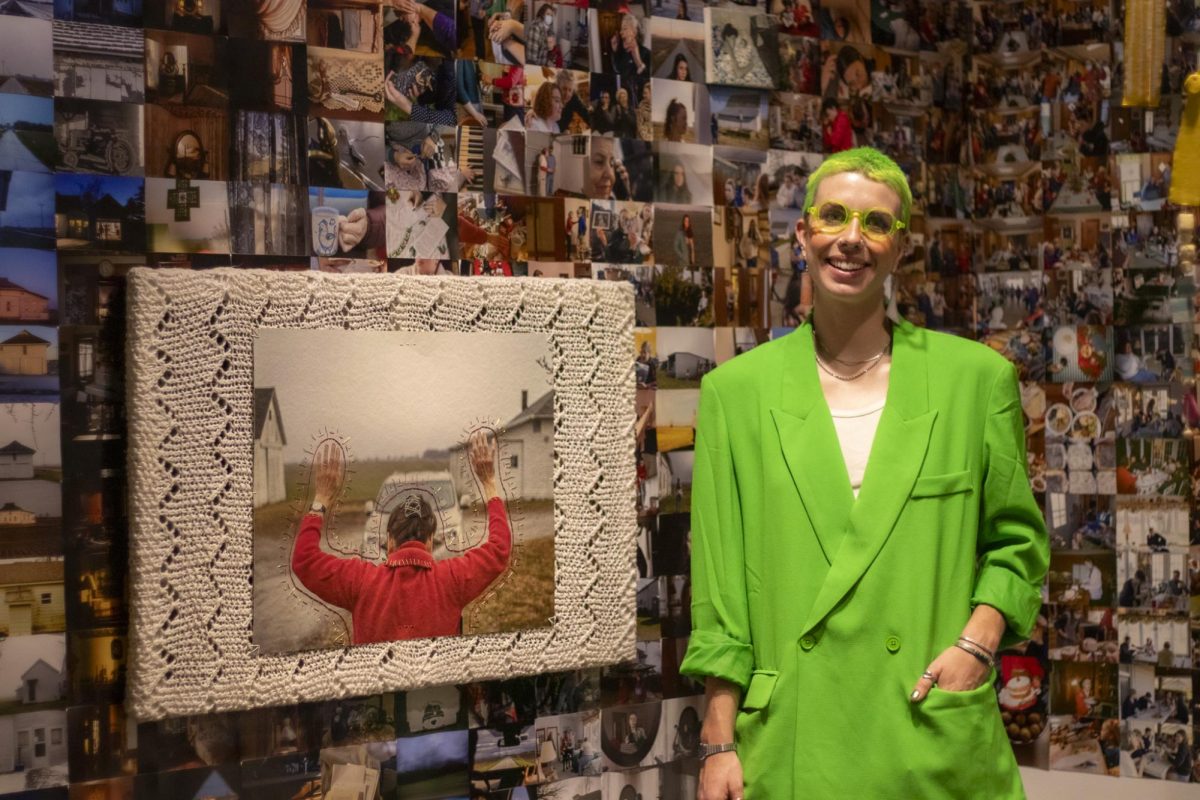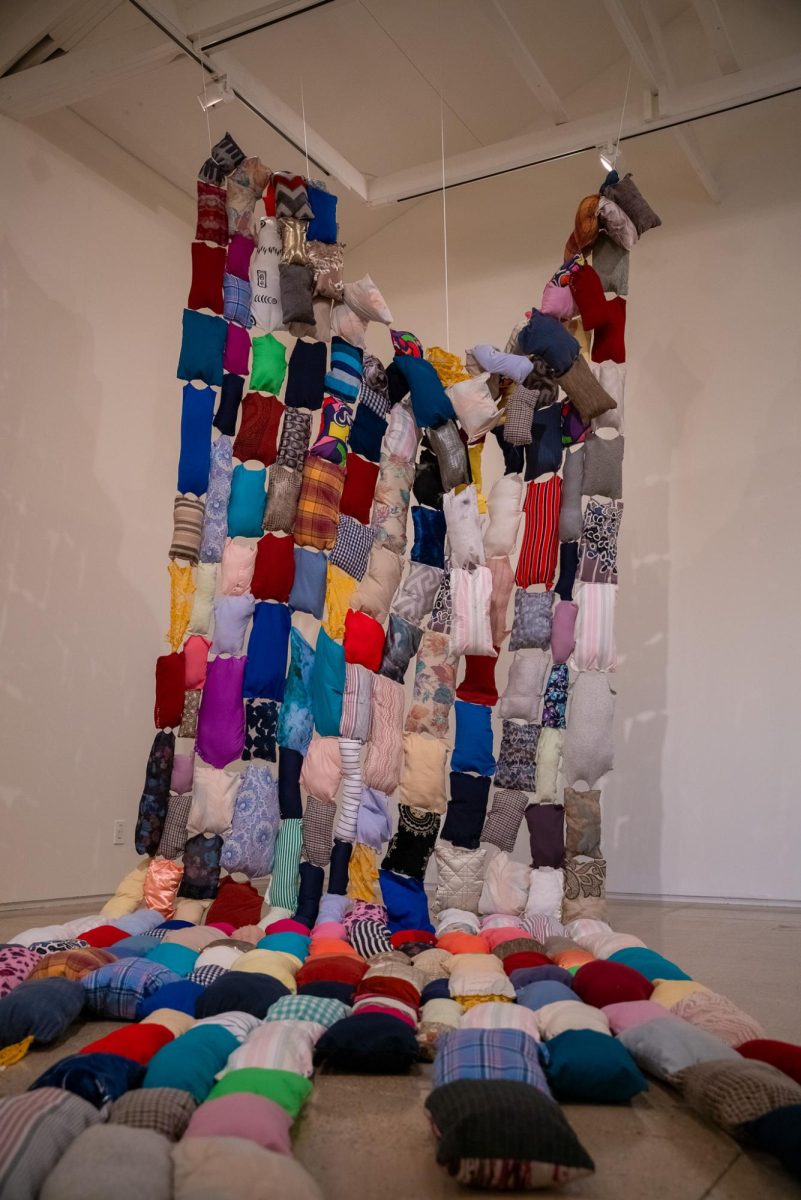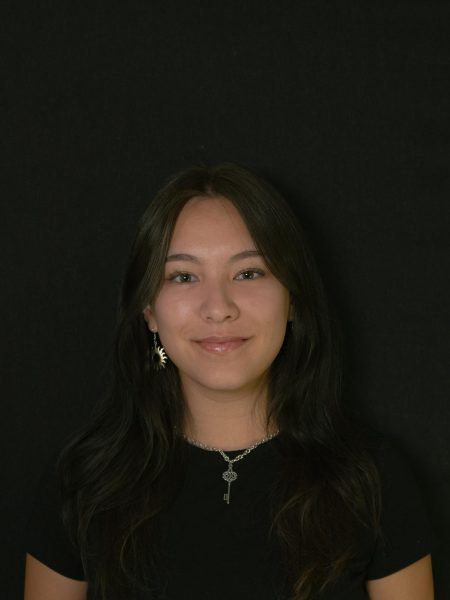UTSA’s Symphonic Band took the stage at 7:30 p.m. on Tuesday, Nov. 14, with an exciting program titled “Songs and Folk Dances.” The line-up included “Fanfare to ‘La Peri’” by Paul Dukas, arranged by Robert Longfield; “Cajun Folk Songs” by Frank Ticheli; “Stillwater” by Kelijah Dunton; “Danzón No. 2” by Arturo Marquez, transposed by Oliver Nickel and “Wedding Dance” by Jacques Press, transcribed by Herbert N. Johnston. Conducted by Dr. John Zarco with guest conductor Hector Garcia, the concert was truly exhilarating.
The band opened their concert by immediately jumping into “Fanfare to ‘La Peri’” by Dukas. The fanfare ran for about two minutes. A short and vibrant fanfare, this served as an attention-grabbing opening. The rhythmic energy and contrast of dynamics were sure to please anyone. This fanfare is known for its bold use of brass instruments, and this was very clearly displayed by the Symphonic Band’s brass section.
The second piece, “Cajun Folk Songs” by Ticheli, conducted by Garcia, ran for about six and a half minutes and came in two movements. The first movement, “La Belle et la Capitaine,” had a ballad-like quality to it. It gave a sense of storytelling, which is fitting, as the movement’s title translates to “The Beautiful and the Captain.” The melodic lines of this movement were emotional and melancholic, while still displaying a feeling of beauty. The second movement, “Belle,” created a celebratory and joyful atmosphere. The rhythmic drive was energetic, including syncopated rhythms and lively patterns. The harmonies complemented the celebratory mood created by the melody, contributing to the music’s overall brightness. “Cajun Folk Songs” was a spirited and joyful experience.
The third piece, “Stillwater” by Dunton, ran for about four and a half minutes and is a fairly new composition, being written in 2019. The ballad was a quick turn from the pace of “Cajun Folk Songs.” It started very softly, with a dominant, smooth woodwind sound. When the brass became more dominant, the sound was still smooth and beautiful, creating a clear beginning. About halfway through the piece, a beautiful solo was delivered by Makayla Aguilar on the oboe. Throughout, the piece was velvety and reflective, and the delivery from the band was wonderful.
The fourth piece, “Danzón No. 2” by Marquez, ran for about nine minutes and is a much more well-known composition for musicians. This classical composition is based on a Cuban dance form that blends elements from Mexican folk music and classical orchestration. This piece included expressive melodies carried by multiple different sections of the band. It also incorporated a variety of solos, including Logan Odom on oboe, Madilynne Mohr on clarinet, Nicholas Zars on soprano saxophone, Joaquin Martinez on piccolo, Marissa Knopf on flute and Xavier Contreras on trumpet. These solos added to the diversity of instrumental textures in the piece, as they created a rich tapestry of sound that enhanced the overall impact of the piece.
The final piece, “Wedding Dance” by Press, ran for five minutes and is another composition that gave off a celebratory feeling. It was an energetic and lively performance by the band. The melody was uplifting, and the band performed it in such a way that it conveyed a sense of happiness and optimism. The expressive dynamics that the band showed throughout this piece truly made it a positive and fun performance.
The concert was a great experience and a wonderful performance by UTSA’s Symphonic Band. The band delivered a captivating and diverse musical experience with this program. The concert was a journey through a range of emotions and musical styles.
Join UTSA School of Music in their next concert sequence, the annual “Winterlude,” beginning with the UTSA Lyric Theatre at 7:30 p.m. on Nov. 27 in the UTSA Recital Hall, followed by the UTSA Orchestra and Choirs at 7:30 p.m. on Nov. 28 at Alamo Heights United Methodist Church and the Holiday Band at 7:30 p.m. on Nov. 30 in the UTSA Recital Hall.









